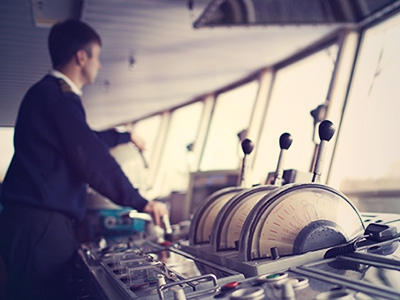Challenges faced and Lessons to be learned
Confidential Hazardous Incident Reporting Programme (CHIRP) has received a report regardingovertaking encounter.
Report Text:
Over the previous two nights I had encountered a vessel in an open water “channel” with banks on either side. On both occasions we were in a head on situation. Although I had one of the banks on my starboard side I altered course to starboard to open up some kind of CPA (0.4 nm), however the other vessel continued up the centre of the “channel” seemingly unable, or unwilling, to deviate from the set course line she seemed to be following.
On the following night of our encounter occurred further south and clear of the “channel”. I was on the usual course as was the other vessel (A), when I detected her on radar at about 10nm (I identified her by AIS). Astern of me at about 5nm was another vessel (B). Once I determined that a risk of collision existed I altered course to starboard and opened up a CPA of 1.5 nm. As before vessel A continued along her course line without any alteration and we passed at about 1.5 nm. Astern of me B had continued along her original track and the two vessels now closed each other on a head-on situation at a speed of about 30 kts. Both vessels seemed reluctant to alter course and finally, as they closed within 2.5 nm of each other, came the inevitable call on #16 “What are your intentions?”
“I have just altered to starboard and you come to port, what do you want to do?”
“Ok I will come to starboard and we will pass red to red”
(This conversation took place on #6)
They must have passed each other at less than 0.5 nm as my radar plot showed that both vessels altered their course by around 5 degrees to starboard and as soon as they were clear of each other altered to get “back on the line”.
CHIRP Comment
This report represents another example of vessels coming unnecessarily close. Rule 8 states:
(a) Any action to avoid collision shall be taken in accordance with the Rules of this part and shall, if the circumstances of the case admit, be positive, made in ample time and with due regard to the observance of good seamanship.
Altering course by 5o at <2.5 with <7 minutes before collision and passing at < 0.5 in open water would, if the reported facts are true, appear to fail on all counts.
Modern navigation systems allow tracks to be maintained to far greater accuracy than in the past and in certain areas this has increased the risk of head-on or nearly head-on encounters. It has been suggested a leave waypoints to port offset would address some of these concerns and the Maritime Advisory Board endorses this approach.
Vessels adopting this approach should bear in mind that end on overtaking encounters are still possible if similar offsets are adopted or recommended routes are being followed and attention is drawn to the findings of the UK MAIB investigation into the collision between Cepheus J and Ileksa.
Source:CHIRP
































































